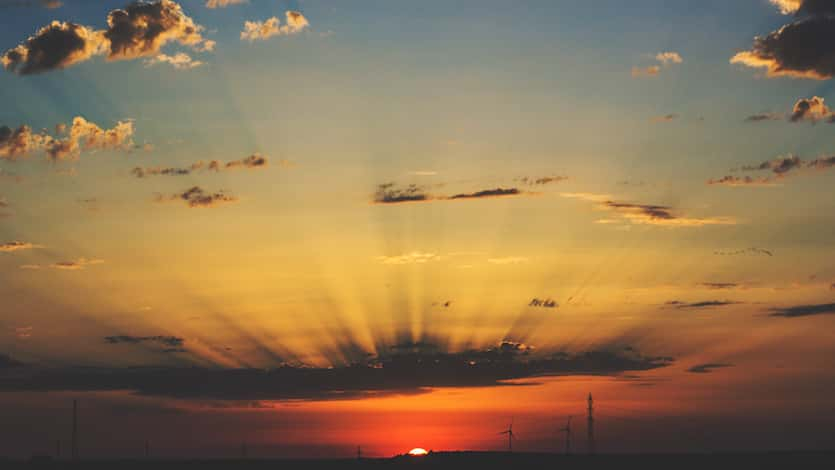When we usually discuss filming locations, we’re speaking specifically about whether you’re filming inside of a store or on an airplane set or inside of a mansion, etc. Today’s blog focuses on four general types of filming, rather than specific places, and how those types of filming affect the budget of a corporate or commercial video production and the final quality. There are four basic lighting scenarios in film production when breaking down a script, which concerns not just the cinematographer but the unit production manager, any producers involved, the 1st Assistant Director, and even the production designer. The setting and time for a scene impacts not just the gear requirements for the camera and lighting departments, but also the overall crew demands and scheduling of the whole shoot, which consequently impacts the budget.
As a general, not-always-true rule, the order of difficulty from easiest to hardest goes like so: exterior daytime, interior nighttime, interior daytime, and exterior nighttime. On a professional script, these appear with abbreviations INT. / EXT. followed by the location (such as Retail Store, Mansion, etc.) with “DAY” or “NIGHT” following a hyphen between the location and the time. In a strictly formal approach to screenwriting, no other details about time of day are important besides day or night, because the point of the word is simply to inform readers quickly about the setting. Remember, scripts are blueprints for videos or movies, so if the script said “6:30 a.m.” the blueprint would be unclear and thus hinder a number of professionals from doing their jobs. Is 6:30 a.m. dark because it’s the middle of the winter or is 6:30 a.m. light because it’s the middle of the summer? Professional screenwriters know to communicate the essential information quickly and without fuss, so with a simple line like “INT. BRICK MANSION – DAY” a variety of people are gaining critical insight into how to translate the script into reality.
Day Exterior
Ignoring the realities of major productions where many dozens of people are involved, let’s focus instead on what the four types of filming involve for a smaller production. At a basic level, lighting is easiest in the day outside because the sun provides the largest and most inexpensive (free) light source imaginable. A cloudy day is ideal because direct sunlight is often unflattering, but basic equipment may involve a neutral density filter for the camera to prevent as much light from entering the lens, which won’t disrupt the colors but will dim the overall image. Bounce boards and silks may be used to soften the light a bit or redirect it, but achieving a nice look filming outdoors is possible with less equipment than other alternatives.
When filming outdoors during the day, also consider natural shading to save on costs. Is there a location for an activity or place of filming that is already shaded beneath many trees during a large section of the day? Is there a gazebo where you could shoot an interview if necessary, or show people engaged in the desired activity? Also keep in mind any audio concerns outdoors because controlling sound quality outside can be even more challenging than indoors, which with telephones, HVAC units, and doors slamming (among other things) is already a challenge. If you need quality audio outside, avoid filming in areas with a flightpath directly overhead or where water features interrupt the audio quality. Anywhere near a busy road is always a nightmare, too.
Night Interior
The next easiest filming situation is indoors at night, primarily because the videographer can create whatever lighting setup he wants inside without worrying about the sun coming through windows. He can make sure that all lighting is the same color temperature and perfectly control the sources of lighting, regardless of whether windows are covered or not. With a lot of modern LED lighting, a good videographer can draw house power (meaning without a generator) and do justice to the location and the filming needs without a lot of equipment or crew. In a night interior shoot, few compromises need to be made even with lower budgets because basic lighting kits are inexpensive and most decently skilled videographers will understand how to use them in controlled conditions.
On higher budget shoots, cinematographers may even place lighting out the windows to mimic moonlight, street lights, or even more sophisticated setups like sirens passing. Night interiors can also be shot in studios fairly easily, whereas exterior shots are tougher to replicate and require large sound stages with immense production design (like the snow forest aboard Starkiller Base at the end of The Force Awakens, for instance). From a corporate perspective, few shoots will occur during the night, though, unless a shoot day runs long during the winter. If there is a danger of having day turn into night during a shoot, make sure to take the light change into account during the planning stages.
Check Back for Part 2, Focusing on Day Interiors and Night Exteriors.

